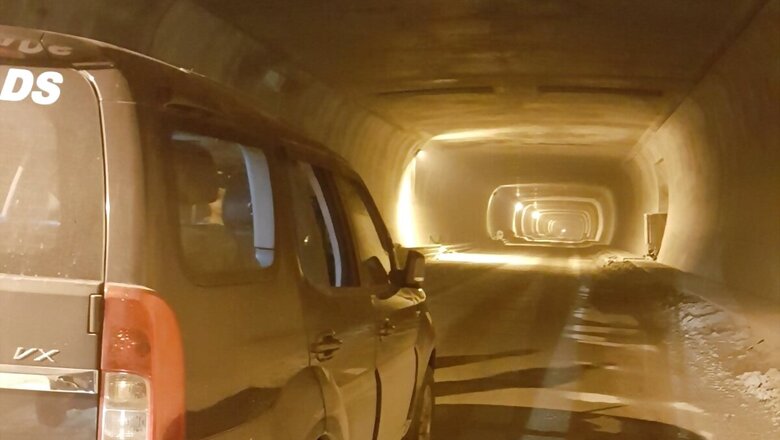
views
The Rs 4,000-crore Rohtang Tunnel, the world’s longest motorable roadway at an altitude of over 3,000 metres, is ready for opening next month following the completion of civil works that began a decade ago. The tunnel will be opened by Prime Minister Narendra Modi by mid-September, Satish Paretkar, Director of Hydro & Underground business unit at Afcons told PTI.
A joint venture of Shapoorji Pallonji Group-run Afcons and Strabag of Austria won the Engineering Procurement & Construction (EPC) tender for Rs 1,458 crore from Border Road Organisation in 2009. The cost of the project has crossed Rs 2,500 crore now, he said. The civil works started in 2009 and was to be completed within 6.5 years.
Paretkar said the exact date of opening of the tunnel is yet to be finalised. The 9.02 kilometres-long Atal Tunnel, named after former Prime minister Atal Bihari Vajpayee, passes under the Rohtang Pass in the eastern Pir Panjal range on the Leh-Manali highway at an altitude of 3,060 metres at the lowest and 3,078 metres at the peak.
The tunnel is 10.5 metres wide and has a height of 5.52 metres and a car can zip through at 80 kmph. According to Paretkar, the horseshoe shaped single-tube, double-lane tunnel has many firsts.
With a length of 9.02 km, it is the longest in the world at an altitude of over 3,000 metres or 10,000 feet mean sea level, he said. Further, it is also the country’s first tunnel to have an escape tunnel within the main tunnel because of the topography.
Globally, escape tunnels are built separately along the main tunnel. This is also the first tunnel to deploy the Rowa flyer technology, which allows engineers to work at inverted levels, he said.
Paretkar said the delay in completion of the tunnel was mainly due to the 410-metre long Seri Nalla, a brook. “Seri Nalla was emitting over 125 litres of water per second, making work really hard. In my entire engineering life, this was the toughest job to execute. It took us more than three years to drill 410 metres along the Nalla,” he said.
In the Seri Nalla zone in the South Portal, engineers faced regular collapse of the tunnel face due to extremely poor geological conditions. Afcons deployed over 1,000 workmen and 150 engineers. The engineering design was done by Australian Snowy Mountain Engineering Company.
The tunnel has consumed 14,508 metric tonnes of steel and 2,37,596 metric tonnes of cement, and excavated out 14 lakh cubic metres soil and rocks, using the drill and blast technique for excavation and the New Austrian Tunnelling method for construction, Paretkar said. At the peak, the tunnel is 2.5 km deep in under mountain belly at the South Portal side and the lowest overburden is 1.5 km, Paretkar said. His team is also building the world’s highest single-arch railway bridge across the Chenab in J&K.
The terrain is so dangerous that there are 13 avalanche zones around the tunnel, yet there was not a single fatal accident in all these 10 years of the project life, he said, adding that each worker is given an electronic chip that will warn of any danger. The all-weather tunnel connects Manali to Lahaul and Spiti Valley throughout the year reducing the distance on the Manali-Rohtang Pass-Sarchu-Leh road by 46 kilometres, and drive-time by 4-5 hours between Manali and Lahaul-Spiti. It is along one of the only two routes into Ladakh and will become key to resupplying military garrisons.
The tunnel was conceived way back in 1983 by the Indira Gandhi government to make the Manali-Leh road all-weather. But it was only in 2002, that the then Atal Bihari Vajpayee government declared construction of the tunnel and laid the foundation for the approach road to the tunnel. The project began to move only in September 2009.
















Comments
0 comment